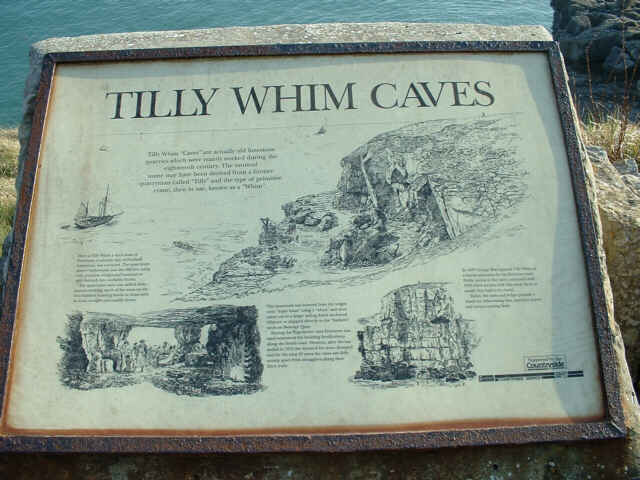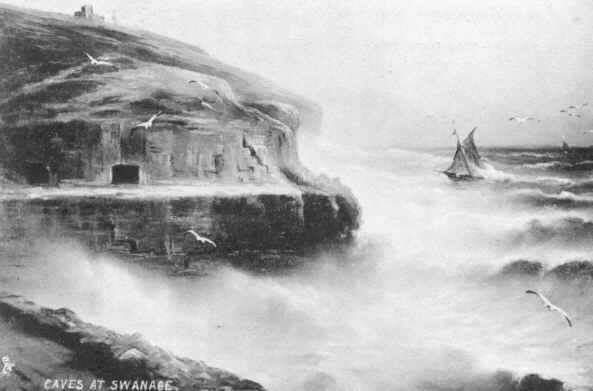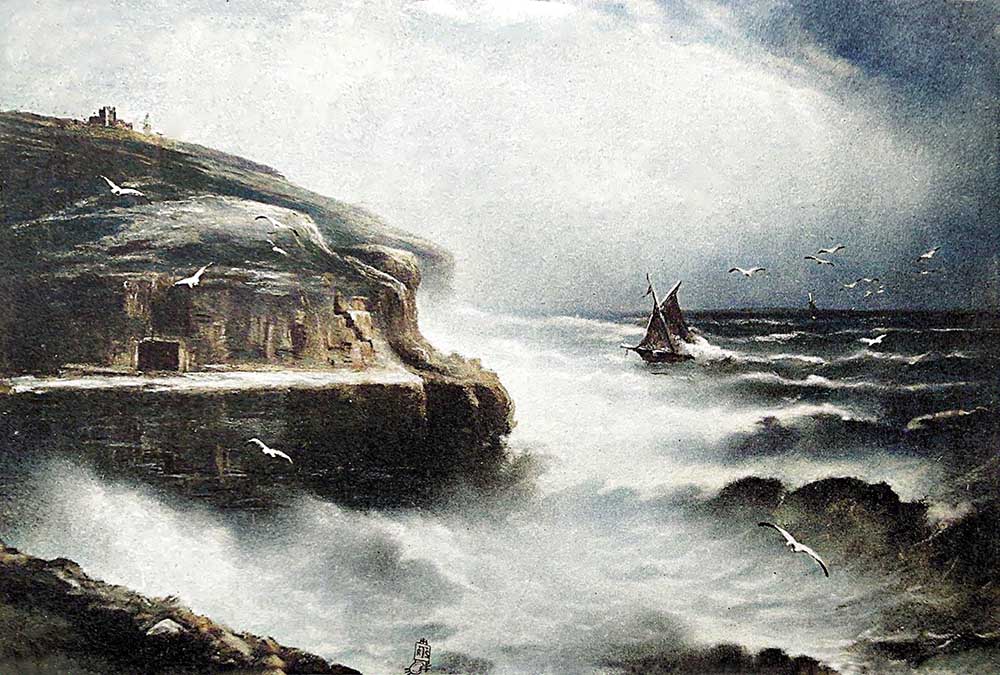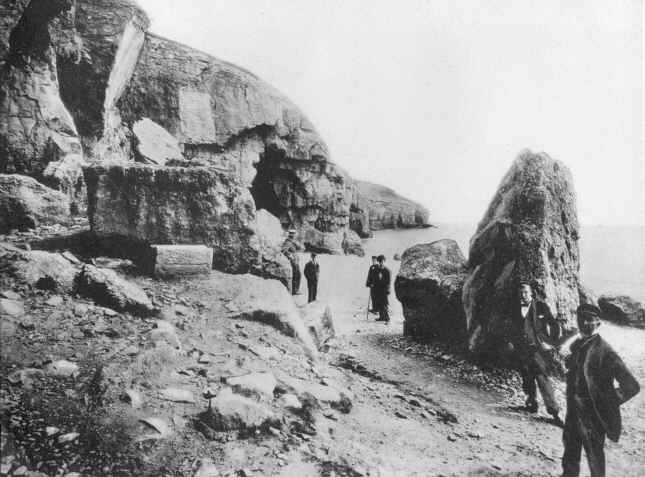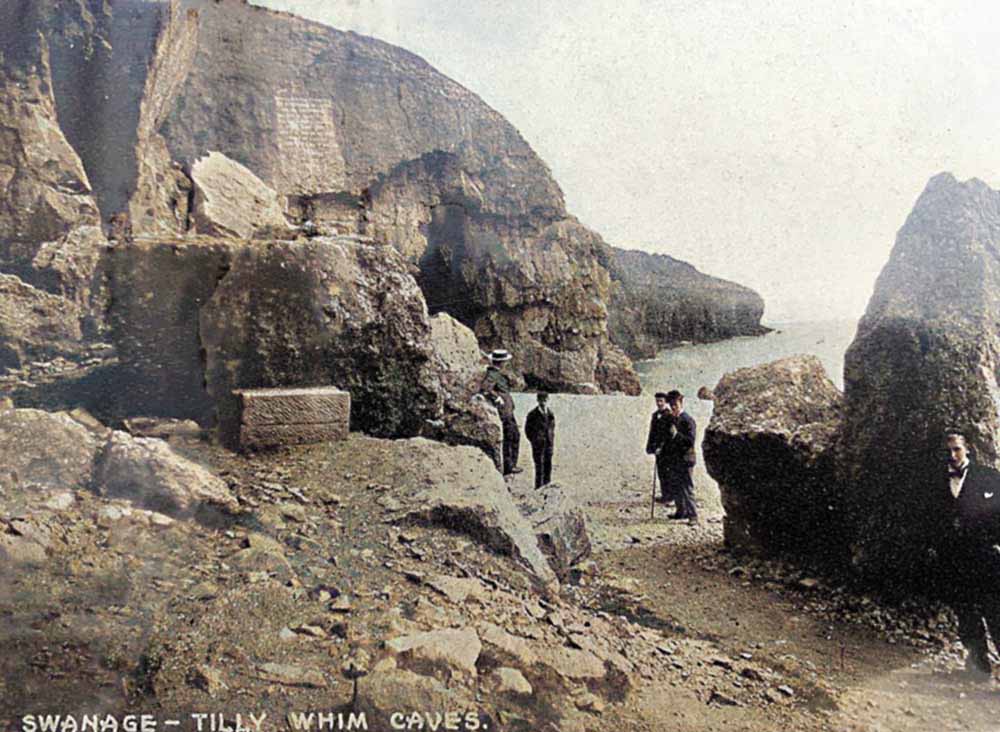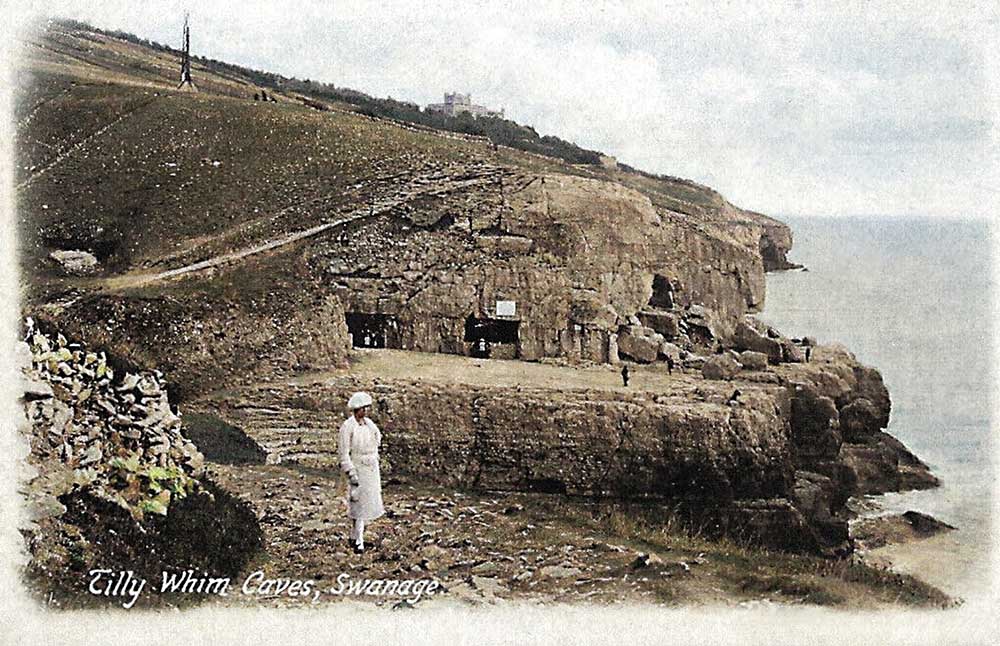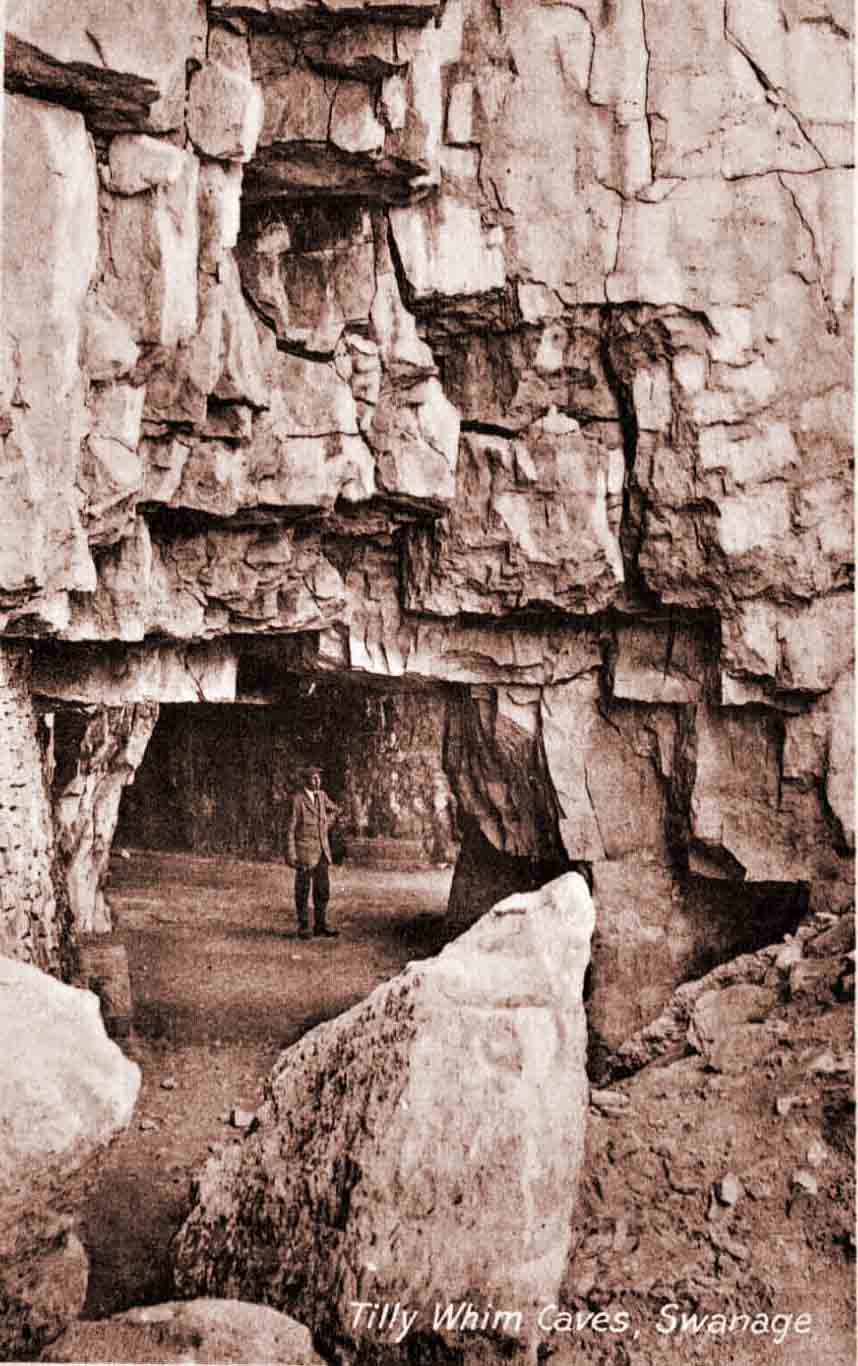Tilly Whim
"Caves" are actually old limestone quarries
which were mainly worked during the
Photo displayed with kind permission of Cyndi Mark |
Here at Tilly Whim a thick seam of Freestone, a
valuable type of Portland Limestone, was extracted. The
quarrymen mined horizontally into the cliff face using
only punches, wedges and hammers to split the rock into
workable blocks. The quarrymen were also skilled stonemasons working much of the stone on site, into finished building blocks or items such as sinks, troughs and staddle stones. The stonework was lowered from the ledges onto 'stone boats' using a "whim" and then taken out to a larger sailing ketch anchored offshore or shipped directly to the "bankers" yards on Swanage Quay. During the Napoleonic wars Freestone was used extensively for building fortifications along the South coast. However, after the war ended in 1815 the demand for stone slumped and for the next 50 years the caves saw little activity apart from smugglers plying their illicit trade. In 1887 George Burt opened Tilly Whim as a tourist attraction for his Durlston estate. Public access to the caves continued until 1976 when serious rock falls made them so unsafe they had to be closed. Today the caves and ledges provide a haven for hibernating bats, maritime plants and various nestling birds. |
